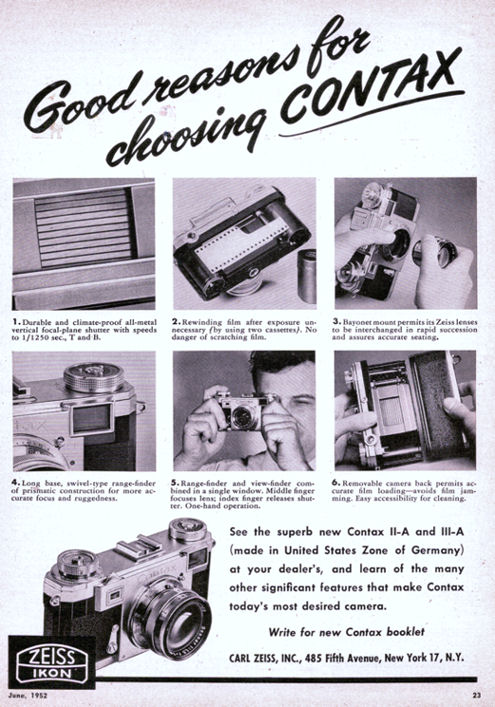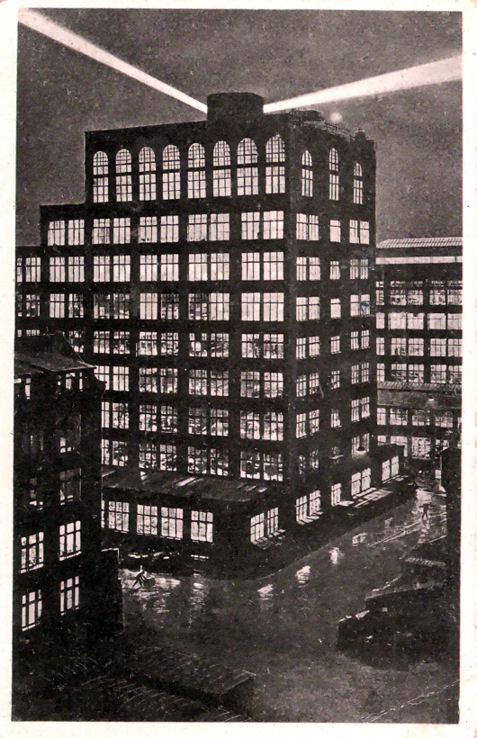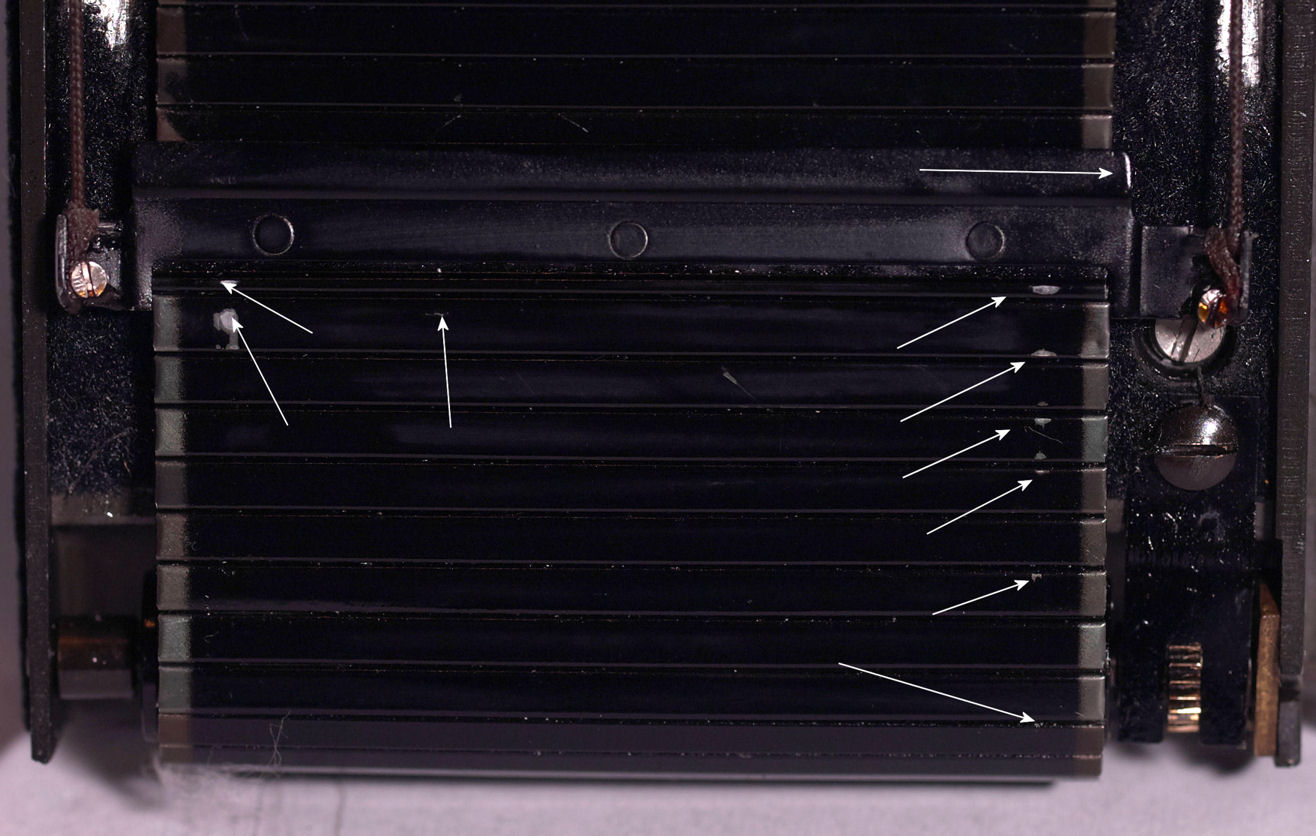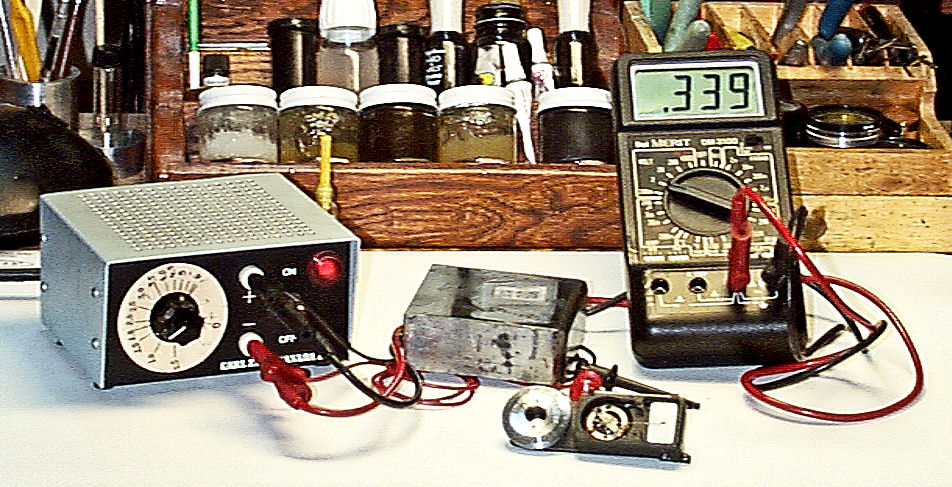Zeiss Ikon Contax Camera Repair
A home for your Zeiss Ikon Contax, Contarex or Super Ikonta camera!
Information
- Services
- Scheduling Services
- Waiting List Info
- Guarantee
- What is a CLA?
- What a CLA leaves out
- Purchasing a Contax Camera?
- Camera Equipment Sales
Cameras Serviced & Pricing
- Contaflex TLR
- Contarex Bullseye
- Contax I
- Contax II and III
- Contax IIa and IIIa
- Zeiss Lenses
- Kiev Cameras
- Contaflex SLR
- Kyocera Contax
Overhauls
Services For The Post-War Model IIA & IIIA Bodies

The IIa and IIIa camera services have been separated. This has been made necessary due to recent developments. The first is that over the past year a number of repair shops have advertised cheap and fast IIIa overhauls with cheap meter servicing's. These cameras are beginning to be presented here due to body and meter unreliability. These cameras present special problems not typically present in cameras that have been preserved in factory original condition. The second is that it has become demonstrated and it is evident to me that Zeiss understood that IIIa light meter mechanical friction type cell electrical connections cannot possibly be made to be reliable. Zeiss demonstrated this understanding by switching to a soldered type cell connection in end of production IIIa light meters. In order that all IIIa cameras that leave here have light meters which are as reliable as the rest of the camera it is necessary to modify all meters to upgrade them to all of the last stage modifications Zeiss implemented.
This is a night time picture of the Zeiss Tower in Jena from 1931. This is one year before the first Contax the Contaflex TLR was first introduced:

Replacement Parts and Necessary Labor Are At Additional Cost
A full regular normal camera body overhaul consists of camera disassembly, parts cleaning, lubrication and adjustments. If repair parts, machining or other additional labor are required these are at additional cost. Please be aware that with an old, dirty, abused and badly adjusted camera it is not possible to determine everything in the way of replacement parts, machining or labor that may be required to bring it into original factory tolerances. In most cases it is only when the camera has been properly cleaned, lubricated and assembled and during final adjustments that the influences of worn, original factory defective, or borderline parts on camera performance become visible and correctable.
An example of such a case is shown by this picture of a Contax IIa shutter:

The lower shutter curtain in this shutter rubbed against the inside of the camera body shell when the shutter is released. This rubbing severely affected the shutter speeds. It was necessary to expend eight hours of labor carefully filing away excess metal inside the camera shell to eliminated the rubbing. Ordinarily a very small amount of rubbing has no effect. But the camera this shutter was installed in had a body with a defective shell casting and was defective from the factory. Nothing is done to a camera that is not absolutely necessary. Most cameras don't have a problem like this one but some do.
Please note that it is my experience that 99% of all cameras that are sent here do not require replacement parts or any labor at additional cost. In most cases when a camera needs a part or two this is no great expense or surprise to the owner. But black dial cameras that have been butchered to be converted to be color dial type cameras and that must be converted back to complete black dial models in order to work properly will require about $195.00 or more in replacement parts. Also, FrankenContaxes that have been assembled out of defective and broken parts by dishonest operators will often require a large number of parts to be made right. The worst case I have had with a FrankenContax required $350.00 in parts to correct everything. If you have not yet purchased your camera be sure to get a return guarantee and then have it professionally examined before accepting it. These days it pays to be careful when buying a Contax.
Please note that it is a rare occurrence for a camera to need a replacement screw or two. When this happens the screws are replaced with original Zeiss Contax screws from parts cameras I buy for this purpose. Zeiss manufactured special screws for every part of the camera and none are alike. I have seen cameras that have been serviced where "free screws" have been used. These are universal thread cutting type screws that ruin any screw hole into which they have been forced.
The following services are offered for these particular models:
Costs are not specified due to competitors using these costs to price lower value services. If you'd like to know the cost of a service please use this link to inquire. I'll be happy to answer all of your questions. All costs are provided on request (POR):
| Service | Cost |
|---|---|
| Complete camera body overhaul - Contax IIa or IIIa | POR |
| Five Year Touch up Service - Contax IIa or IIIa | POR |
| Light Meter Voltage Sensitivity Test and Overhaul - Contax IIIa | POR | Light Meter Selenium Photocell Rejuvenation (If Possible - See Meter Sensitivity Testing Below) | POR | Light Meter Selenium Photocell Replacement with New Photocell (At customer request or if necessary) | POR |
| Camera Winterization camera body overhaul - Contax IIa or IIIa | POR |
| Rangefinder Image Vertical Coincidence Adjustment | POR |
| Repair Estimate | POR |
CONTAX IIa and IIIa Complete Body Overhaul
The IIa and IIIa body overhaul service is identical for both camera models and includes the following items:
- Complete body disassembly with removal and ultrasonic cleaning of all parts not permanently attached to the body including shutter and film advance mechanisms. Following cleaning all parts are carefully inspected for wear and original factory defects. Necessary corrections are made at no additional cost. When all parts are ready the camera is slowly assembled over a period of days while it is tested to ensure critical adjustments will not fall out of alignment due to residual stresses.
- Hand cleaning and re lubrication of the focusing helical.
- Hand solvent cleaning of the body shell.
- Complete re lubrication of all camera mechanisms using the appropriate modern highest possible quality clock and watch oils and greases.
- Complete disassembly, ultrasonic cleaning, lubrication and alignment of the rangefinder module.
- Detailed cleaning of all optical rangefinder and viewfinder components.
- Restoration treatment of exterior leather and permanent removal of Zeiss bumps.
- Restoration of deteriorated engraving fill paint.
- Cleaning and lubrication of the back closure mechanisms.
- Detailed cleaning of all control knobs and surfaces.
- Precision shutter adjustment and timing to obtain the maximum performance obtainable.
- Precision alignment of the focusing helical and rangefinder module to obtain silky smooth yet positive focusing action.
- Precision rangefinder horizontal alignment. Vertical misalignment correction is a separate service.
- Precision lens mount alignment to ensure maximum focusing accuracy.
- Flash synchronization mechanical (black dial models) or electrical (color dial models) adjustment and alignment.
- Inspection of the shutter tapes and shutter cords.
The shutter tapes on the IIa and IIIa cameras, unlike the earlier II and III models, do not often need to be replaced. Perhaps about 1 in 100 IIa or IIIa cameras need new tapes due to age or fraying. Shutter tape replacement in the IIa and IIIa cameras is $125.00 additional cost. If your IIa or IIIa camera requires new tapes you will be advised of this before any tape replacement work is done.
CONTAX IIIa Light Meter Overhaul
Please note that effective February of 2010 the last maker of selenium photocells closed its doors and went out of business. New photocells for the Contax IIIa and III cameras are no longer available at any cost anywhere. I do have a limited stock of new photocells available and these will be used until they are all dispensed. New cells will be sold only with overhauled meters and during a complete Contax IIIa body overhaul and are not available individually. Because new cells are unobtainable, and to conserve the few remaining cells new selenium photocells are installed only at customer request or if light meter testing demonstrates that only a new photocell will provide a reliable and accurate light meter.
The typical Contax IIIa light meter seen here is not in original factory condition. Most have been tampered with in an attempt to make the meter more accurate in response to three factors resulting from aging of the light meter:
1. The small magnet in the light meter is a 1950's era magnet and it looses its magnetic strength over time. The amount of this loss is variable from camera to camera. A less strong magnet means the meter requires a stronger photocell in order to provide accurate light meter readings. There is no remedy for lost magnetism other than to increase the Voltage provided by the photocell. This is why every meter undergoes a post overhaul sensitivity test to determine the Voltage the meter needs to provide accurate readings.
2. The selenium photocell can decrease in its response to light and produce less voltage. This is another factor that is directly related to storage conditions and age. Some low voltage cells can be rejuvenated to produce a much higher voltage. Only testing conducted here on the cell can demonstrate if a particular cell can be rejuvenated.
3. Electrical connections inside the light meter corrode. Corrosion is an electrical insulator and the greater the amount of corrosion on electrical connection points the more voltage from the photocell is required to obtain accurate light meter readings. During a normal light meter overhaul all electrical connections between the photocell and the light meter are converted to solid soldered connections using solid silver wire. This ensures long term reliability and the lowest necessary cell Voltage.
After it has been overhauled, and prior to the installation of the selenium photocell every Contax IIIa light meter undergoes an electrical sensitivity test to determine its electrical condition. During this test the light meter is provided with a variable test Voltage to determine the Voltage necessary to obtain full scale meter needle deflection. This is the maximum amount of Voltage the meter will ever need.
1. If the selenium photocell that came with the camera can be rejuvenated to provide this voltage or greater it is rejuvenated and reinstalled after the meter has been overhauled. Rejuvenation involves many steps, some of them are trade secrets. Some of these steps are mechanical and others are mechanical. Rejuvenation includes soldering and encapsulation of solid silver wire to the electrical connection points of the cell.
2. If the selenium photocell that came with the camera cannot be rejuvenated to provide the necessary voltage then a brand new photocell will be installed and the old photocell disposed of.
Here is a picture of a Contax IIIa meter during sensitivity testing. The Zeiss power supply on the left feeds a variable voltage to the light meter. This Voltage is read by the Volt Meter on the right. The power supply is adjusted to provide full scale deflection of the light meter. This measures the sensitivity of the light meter to the Voltage provided by the selenium photocell. This voltage will vary greatly from meter to meter.

As you can see this meter requires a selenium photocell that produces a maximum of 0.339 Volts. The photocell that came with this meter, after it has been rejuvenated, produces 0.325 Volts. This is less Voltage than the meter needs and so the photocell will be discarded and a brand new photocell installed. A brand new photocell produces a minimum of 0.500 Volts and this is more than enough for any light meter. Just as a note the power supply on the left is an original Carl Zeiss manufactured camera repair tool originally used in the Canada Official Zeiss Repair Center.
Notes on Quality:
We have found by testing that there are no shortcuts to a completely reliable camera. We know that to provide you with a camera that has smoothness of action, precision, accuracy and reliability much work is required. We spend two weeks per camera. This is what it takes to provide you with the Zeiss Contax that it was designed to be.
Very often we are presented with cameras that have been serviced by others and which have failed to satisfy their owners. In many cases we are asked merely to correct those aspects of camera function that the owner finds objectionable. In most cases this is the focusing action. Unfortunately, we are not able to do piece work to correct the work of others. The reason is that our experience is that with time and use other problems with these cameras will arise and require correction. We have learned by experience that the only way to completely correct all of the visible and latent problems with such a camera is to take it completely apart and do the job over again correctly. We actually do spend an entire week on a single camera. Experience again has taught us that this is what it takes to do the job right so that it is done only once.
Auxiliary Services
Periodic Touch up Service - $124.95:
This service is for camera bodies that have been overhauled here previously only. It consists of a camera adjustment check followed by disassembly to the modular level with cleaning, re lubrication, readjustment and reassembly. It is a very deep and thorough service that extends the life of the camera and keeps it reliable and accurate. It should be performed at least once every five years.
Cameras sent here for a touch up service are not subject to any wait, are not listed on the waiting list, and are processed as quickly as possible.
The reason that only cameras that have been previously overhauled here are eligible for this service is that part of the overhaul procedure is to prepare cameras for this periodic service. During an overhaul each and every screw in the camera body is ultrasonically cleaned and then the screw and its hole are greased. This ensures that when the camera comes back here for a touch up service it is easy to disassemble. It also prevents the phenomenon of "disassembly/reassembly wear and tear". Another reason is that each camera that is overhauled here gets exactly the same treatment and so I know what I am dealing with. These two factors make a touch up service less difficult for me and at less cost and time for you.
Camera Winterization - $675.00:
Most mechanical cameras do not perform well in very cold weather. The grease and oils solidify and restrict the movement of precision parts. In many cases the camera shutter will not release in cold temperatures. This service is a complete and complex camera overhaul and cleaning followed by lubrication with very expensive special low temperature watch lubricants designed to function well at temperatures ranging from normal room temperature to as low as -25 Degree Celsius (-77 Degrees Fahrenheit).
Deep Cold Preparation - $775.00:
Preparation of a camera for use in temperatures from normal room temperature to temperatures as low as -52 Degrees Celsius (-126 Degrees Fahrenheit) requires use of a very expensive special Arctic Watch Oil, and special preparation of the camera bearings and sliding surfaces using extremely expensive blocking agents to retain this very fugitive oil in place and to prevent its migration.
Leather Bump Removal:
This service is included at no additional charge in the body overhaul service. The formation of the well known "Zeiss Bump" is the result of a chemical reaction between the tanning chemicals used in the leather, and the exposed copper in the exposed brass rivet heads used to hold the back pieces together. These bumps can be removed, but it is also necessary to cover the brass rivet tops with an insulating material to ensure the bumps will not reappear. This service involves the following steps:
- Removal of the leather.
- Cleaning of the brass rivet heads.
- Three coats of sealant is applied to the rivet heads.
- The leather is treated to remove distortions caused by the bumps.
- The leather is re cemented in place with a conservation quality adhesive which allows later removal without leather damage.
- The exterior leather surface is cleaned and polished.
This process does not involve any cutting or slicing of the leather. The leather is removed intact and without any physical, chemical or surface damage.
Rangefinder Image Coincidence Adjustment:
This is an additional cost service that is only provided during a complete overhaul. This service corrects the vertical misalignment of the rangefinder/viewfinder image. It can only be provided in conjunction with a normal camera body servicing. It consists of removing the rangefinder lenses from their frame, cleaning the lenses and mounts and then the lenses are re cemented back into their frames with a critical optical alignment.
Repair Estimate - 65.00:
If you send me your camera for a repair estimate I will disassemble it to the extent required to determine the problem. I will inform you by email of the problems and will provide you with a repair cost estimate. If you do not authorize the repairs the camera will be reassembled and returned to you.
There is one thing that must be carefully considered before you decide against a complete servicing and send the camera for an estimate. The oils and greases in the camera are approximately 60 years old and have been slowly oxidizing inside the camera and are becoming thick and sticky. This rate of oxidation has been limited by the fact the inside of the camera has been sealed from the intrusion of fresh air, and more oxygen. When the camera is opened for the estimate examination the internals are completely exposed to fresh supplies of oxygen and the oxidation of the old oils and greases can rapidly accelerate. It is entirely possible for a camera that was opened for an estimate, and which was not repaired, to be received by you in a lower state of operational reliability than when you sent it to me. It is not unusual for such as camera to have harder focusing, a more sluggish shutter, stickier winding, and a hesitating self timer all due to old oil and grease whose oxidation was refueled and accelerated merely by the camera having been opened. This phenomena doesn't always happen, but it happens often enough that you ought to know about it.
Customer Submitted Parts Bodies
Occasionally a customer will include an additional camera body along with the one to be worked on so that I can use it as a source of "free" parts. There are several problems that can arise with this approach. It is also more work for me.
- Zeiss made many internal changes to the Contax as it was made between the years of 1951 to 1964. It is possible that the parts body may not contain parts compatible with the one to be overhauled.
- The needed parts in the parts body may be worn out.
- The Contax is hand made out of hand made parts which were hand selected by the assembler when the camera was manufactured. There are very wide "as manufactured" tolerances on parts and it is possible that a replacement part from the parts body may be oversized or undersized to the mating parts in the body being overhauled.
- The overhauled body may not, and they usually do not need replacement parts.
- I have a full assortment of parts bodies of all variations on hand already. I am always very reasonable about parts prices when they are needed in a body being overhauled.
- I have a full organized assortment of all parts of all body variations from previously disassembled cameras on hand and ready for use.
- Nothing is really free. If you insist that I use parts from your parts body first before using my parts on hand there will be a labor charge to extract the parts from your parts body and to clean and inspect them before use. This charge will vary depending upon how deeply the parts body must be disassembled to get the necessary parts out of your parts body.
This charge will be $75.00 per hour even if it is found the parts in your body are not useful, are broken, out of tolerance, or incompatible with the design of the body being overhauled.
We have found by testing that there are no shortcuts to a completely reliable camera. We know that to provide you with a camera that has smoothness of action, precision, accuracy and reliability much work is required. We spend two weeks per camera. This is what it takes to provide you with the Zeiss Contax that it was designed to be.
Very often we are presented with cameras that have been serviced by others and which have failed to satisfy their owners. In many cases we are asked merely to correct those aspects of camera function that the owner finds objectionable. In most cases this is the focusing action. Unfortunately, we are not able to do piece work to correct the work of others. The reason is that our experience is that in a little time and use other problems with these cameras will arise and require correction. We have learned by experience that the only way to completely correct all of the visible and latent problems with such a camera is to take it completely apart and do the job over again correctly. We actually do spend an entire week on a single camera. Experience again has taught us that this is what it takes to do the job right so that it is done only once.
If you want to know just how bad a camera servicing performed by others can be please read the camera report I had to send to a customer who sent his Contax IIIa to me after he had paid over $200.00 for a CLA done by a well known shop: Report
